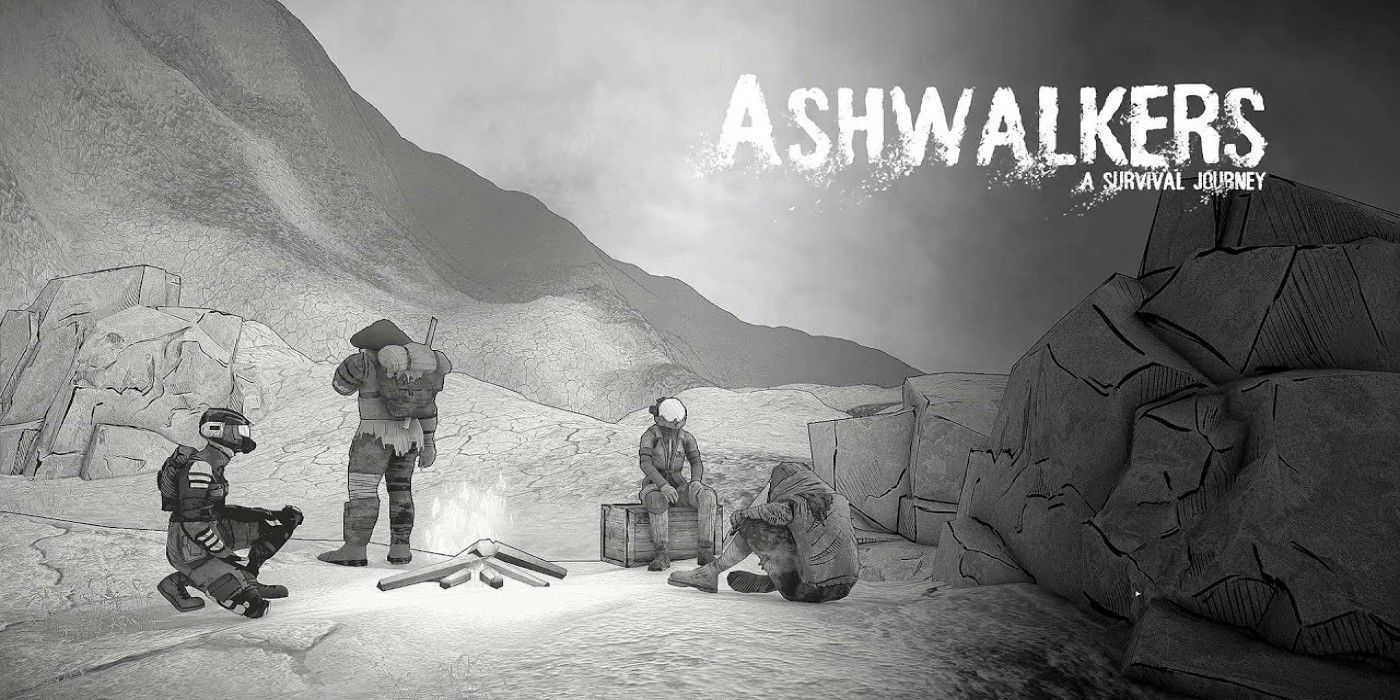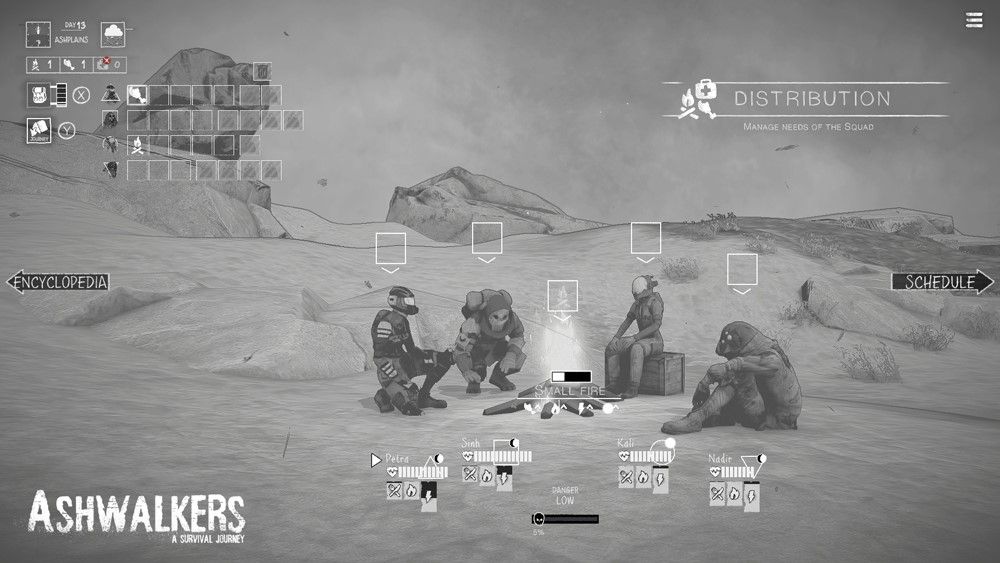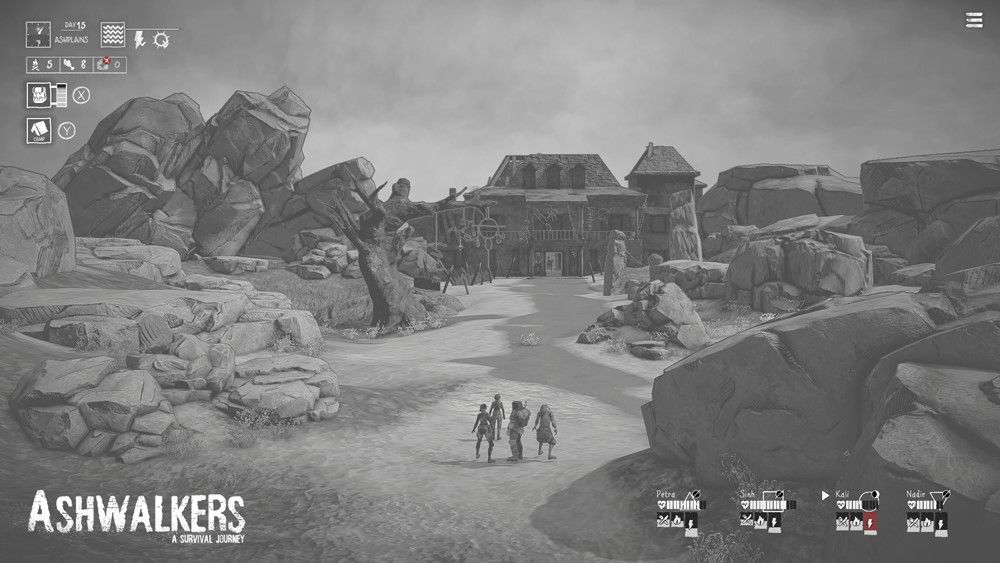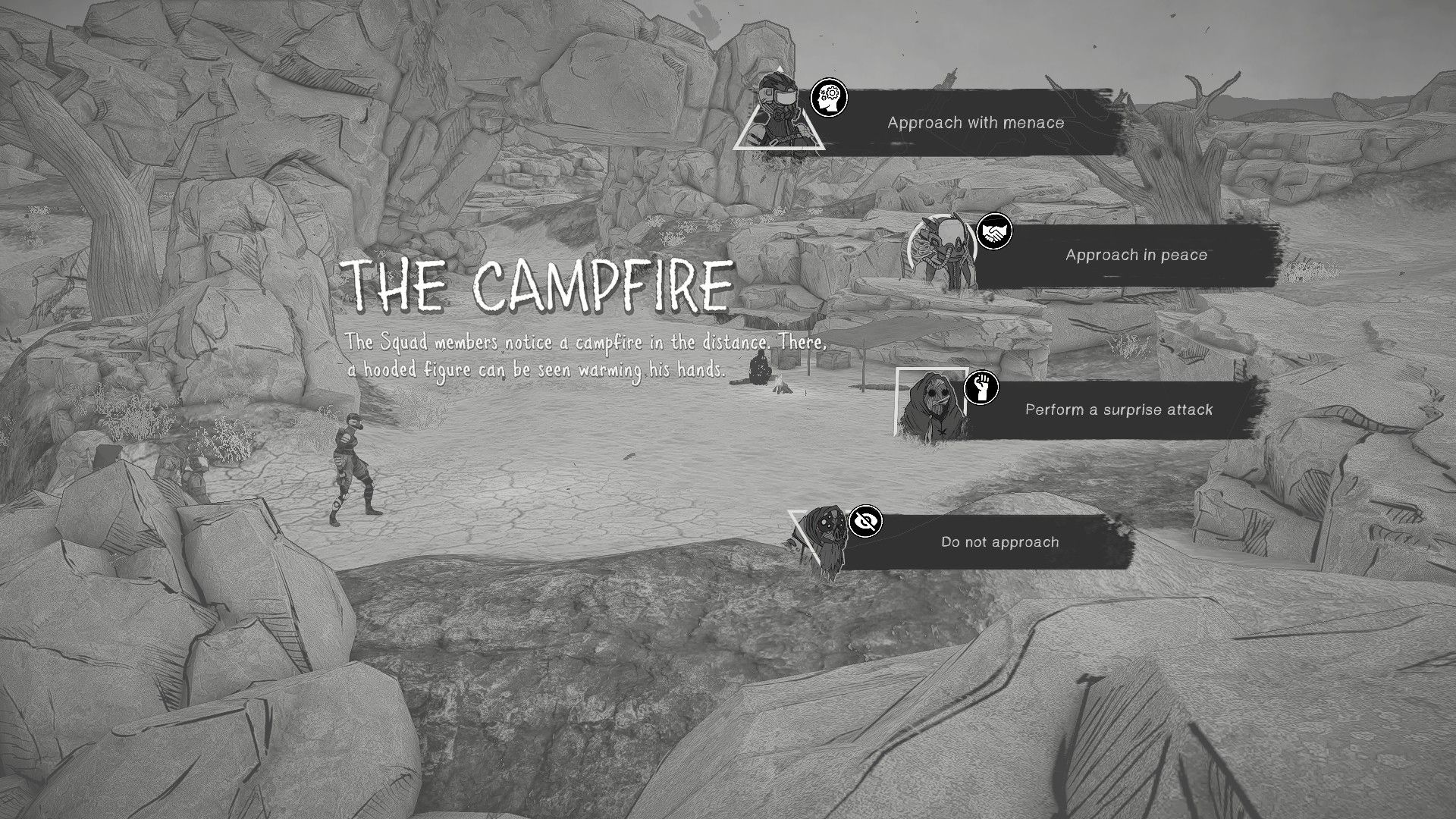
Ashwalkers is a new survival narrative that’s driven by the choices players make. The game’s developer is the new Nameless XIII, founded by the co-founder of Dontnod Entertainment, Herve Bonin. Ashwalkers currently has a demo available on Steam so players can get a feel for the choices and sacrifices they’ll need to make throughout the game.
To talk about the development and creative decisions of Ashwalkers, Game Rant spoke with Herve Bonin and the game’s creative director Matteo Gaulmier in an interview. This transcript has been edited for brevity and clarity.
RELATED: Ashwalkers Devs Talk Artistic Design and Inspiration For Upcoming Game
GR: What inspired the creation of Ashwalkers? Why choose a volcanic apocalypse?
MG: The project was born in a school of game design in the south of France. We had one month to propose a project in our school to produce for the end of the year. We produced the first prototype of the game, and at the time it was called "Left Behind." At first it was just your typical nuclear apocalypse. It was just something with a lot of snow, lots of very very classical [apocalypse settings] and we tried to find something that was meaningful and original. We even went to a world covered in water and an insect apocalypse, so we thought about everything and finally found the volcanic apocalypse.
At the beginning of the project, we chose to go with an artistic direction in black and white. Pure black and pure white at the time. We thought, "Okay, something very simple and very evident for us is the ash is gray, so why don't we try to merge them?" We changed the world to a gray artistic direction and it matched great with our universe and what we were trying to say, so we went for it.

GR: Does any part of the game stray from the gray scale?
MG: The only color you find in the game is red, which was to use a color to indicate the danger or draw attention in a gray scale environment. Mostly when you find red, it's nothing good for your playthrough. So there is blood, you killed someone, you are bleeding, danger is near, it's coming back, etc. You need to stay careful about the danger and the change that's coming up. So there is no other color than the red. We tried different things, but red was very impactful for the direction. It adds more stress to the situation and becomes a breakthrough for the narrative of the game.
GR: The game very much looks and feels like a comic book - was that intentional?
MG: Yes, absolutely. The main inspiration at the time when we created the project comes from two things: Sin City was a great inspiration and pushed us in our artistic direction to add red because we saw that "okay, that works we can try it." We tried other colors like blue or green and it didn't work very well, but Sin City was a great inspiration. There was one more, by Manu Larcenet and his graphic novel called Le Rapport De Brodeck, which is the story of a man who is living and surviving in the wild and the snow. The fact this is pure black and pure white keeps the player searching in the shadow even if there is danger in the black. They don't know if what they see is just a shade of a tree and don't know where the danger is coming from.
GR: What inspired the decision of not having voice actors?
MG: There are many factors in that decision. One decision is linked to choices and to [having a] text-based game, another is attributed to “choose your own adventure” books. This decision was to have the liberty to say anything or put any situation we wanted to, [but also] think about the production cost. A bit like your tabletop RPG, you can say "okay there is a soldier coming in front of you." You don't have to actually modelize one soldier coming in front of you with the sound, the explosion - you just have to tell your player, "Okay, there is this thing in front of you." By using this text-based narrative, we allow ourselves to have a greater range of decisions in the narrative.
HB: Also, it's a lot to do with the soundtrack of the game, and all the songs were made because all the emotion has to come from music and sound, so it's a great choice to have made.

GR: How was Ashwalkers influenced and affected by Life is Strange?
HB: I think what you're seeing, which is very important, is choice. There are choices that matter in the game. It's what makes me invest in this project and this team. When I played his prototype, there was something very significant about the choices you were making being so important and consistent. There is a soul in the game, and I think it's common point with Life is Strange is that every choice you are making there is a reason. There are consequences - if anything they unfold later. So you have this feeling you are writing your own story with your choice. It's what we learned from Life is Strange that a narrative story is very difficult to do in the game, but it's important that the player is embedded in the story by choice. And our goal is to create a sort of fantasy with games. One of the biggest differences between Life is Strange is for sure the setting, but also the central mechanics.
GR: How difficult was it to come up with the 34 endings for the game?
MG: Every choice you make in the game matters and influences a sort of category of behavior. You see someone: will you talk to him? Will you kill him? Would you just threaten him, or help him? Depending on the decisions the player makes, this will increment a value and unlock a type of behavior your group embodies. Each choice you make in the game influences that. We wanted to avoid the infinite branching tree of things like, "Okay, you did that thing so that thing happened, and that thing happened, and that thing happened." So we did something like a systematic narrative that is modified and influenced by a system. More than the world carrying the outcome of your decision, that the group is carrying is its own outcome and the weight on its shoulder.
And the conditions and the outcome of the situation and the endings comes from within the group. We avoided complicating a problem like, "Okay you killed the brother of this one and so this one is going to try to get revenge." We avoid this problem by staying with "Okay, you have done that, and this has completely changed you. You have killed a lot of people to come here, and now you've completely changed. You're completely impacted." This is how we managed to get this number, and we could develop more, but just by the system we avoided a lot of difficulty of the creation.
RELATED: The Biggest Decisions in Life is Strange

GR: How different are the endings from each other?
MG: There are some key choices that will happen to the player, like, “Will you rather go here or here?” And these kinds of choices define "Will you fill this goal, or this goal?" We have final answers like, "You are into the ending of the game, and now you have to make your final decision - how will you end all this?" The combination of the influence the group has on itself, some key choices, and the final decision determines which ending the player reaches.
HB: The endings are quite different. You are not arriving exactly at the same place. So what we want also to achieve is to propose different endings, not only with the same characters in the same places, but each time you have a choice that visits another part of the world or the situation.
GR: How long should an average playthrough take?
MG: A successful run, like you've managed your group well, you have not died once or gotten a game over, should take between 2 to 3 hours. This is only to reach one ending, so after that I think our players will play between 5, 6, maybe 8 hours of the game to see different endings.
HB: We intend to draw on the lifespan of the game [because] it is quite short, but permits the player to see the potential of the game and feel the score, which is quite different [per] situation.
MG: Yes, we wanted to have this short, replayable story that you can retry like, "Okay, I want to see something else." And we thought, "If the game is 10 hours, 20 hours, who has the time to go back to the start and redo every choice?" We made something on the scale of what we wanted to do.
GR: How do the survival mechanics work in the game?
MG: The survival mechanics are very simple, and that was our intention. We wanted to keep the focus on the narrative and the story. So the survival experience is influenced by many factors, by your choices, and by the weather. The weather influences a lot of what you're going through. If in one run, you will go through a full ash storm coming in your face. You will not have the same challenge[s] you have in the camp when you manage your resources. You may have events that happen to you in the camp that influence and impact the group, but are random. [These random encounters] that happen to you change your experience and your survival. And the game gets more and more difficult as the journey is impacted by the storms themselves.
GR: Do players have the option to correct any mistakes they may make in the game?
MG: This was the main challenge and this was an intention. There is no good or bad choice for the player. Like, you are in a situation and there is no, "Okay, this choice is better than this choice." Whatever you choose, there is some price you have to pay. Whether it's material, emotional, physical, or short or long term, there is something you have to pay. So there are not any mistakes in the game, there is more [just] conscious sacrifice. So you can't make a bad choice, you can't make a mistake, you just choose whatever is the best for you and whatever is "least worst" for you. But you have to choose in a situation, and you have to decide, "Okay, what sacrifice do I make? Do I risk the life of one of my characters? Do I get abundant food to scare away these wolves? And to ensure the survival now of my group but I won't have food later?" So you don't really make mistakes, you just make a sacrifice.
[End.]
Ashwalkers is in development for PC.
MORE: Square Enix Reportedly No Longer Working With Life is Strange's Dontnod

